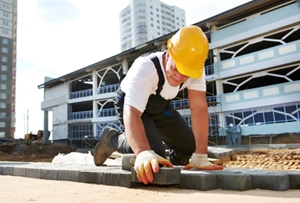Schedule a Chimney Sweep Today for a Clean and Safe Fire Place
Schedule a Chimney Sweep Today for a Clean and Safe Fire Place
Blog Article
Opening the Keys of Sustainable Masonry Building Practices for Eco-Friendly Structures
Among the myriad strategies to eco-friendly structure, lasting masonry building and construction stands out as a reliable and sturdy technique that holds a wide range of untapped capacity. From the option of materials to ingenious building and construction techniques, the secrets to attaining sustainability within stonework construction are diverse and interesting.
Benefits of Lasting Masonry Building
Embracing lasting masonry building and construction practices not only minimizes ecological effect but additionally provides lasting financial benefits to builders and neighborhoods. By using products like recycled blocks, blocks, and stones, building contractors can substantially lower the carbon footprint of their tasks while promoting source performance. In addition, sustainable masonry construction strategies, such as proper insulation and thermal mass homes, can enhance power performance within buildings, leading to minimized operational costs over time.
Additionally, the resilience and strength of stonework structures add to long-term financial benefits. Buildings constructed using lasting stonework practices often need much less repair and maintenance, converting to set you back financial savings for builders and homeowner. The longevity of stonework products likewise makes sure that frameworks continue to be secure and secure, reducing the demand for constant renovations or substitutes.
Eco-Friendly Masonry Products
Making use of eco-friendly masonry products is a crucial action in the direction of enhancing the sustainability of building techniques and reducing environmental influence while making best use of lasting economic benefits. Lasting stonework materials are sourced, produced, and made use of in a manner that lowers total environmental influence. Sustainable concrete obstructs incorporate recycled accumulations and might feature improved insulation residential properties, adding to energy efficiency in buildings.
Furthermore, natural products like adobe, rammed earth, and straw bundles give exceptional thermal mass buildings, lowering the need for heating and cooling power. These materials are usually locally offered, promoting local economic climates and decreasing transportation-related carbon emissions. By selecting environmentally friendly masonry materials, building and construction jobs can substantially lower their ecological footprint and add to the development of healthier, more lasting developed environments.
Energy-Efficient Masonry Techniques
Power effectiveness plays a vital duty in enhancing the sustainability of stonework building and construction techniques. By implementing energy-efficient stonework strategies, home builders can considerably reduce the overall power usage of a structure, resulting in lower operational costs and a smaller environmental impact. One essential energy-efficient stonework technique is the usage of thermal mass, which entails including thick materials like concrete or brick right into the building's framework to soak up and save warmth. This helps regulate indoor temperature levels, decreasing the need for mechanical have a peek at this site heating and cooling systems.

Technologies in Sustainable Stonework
Current advancements in sustainable masonry practices have brought about cutting-edge techniques that are reshaping the building and construction market. One such technology is the growth of self-healing concrete, which makes use of bacteria embedded within the concrete to recover cracks autonomously. This development not just reduces maintenance costs however also boosts the toughness of masonry structures, adding to their sustainability.
One more noteworthy innovation is using recycled accumulations in masonry building - masonry contractor. By incorporating products such as crushed ceramic waste or recycled glass right into concrete mixes, building contractors can minimize the ecological impact of building projects while keeping architectural stability. This practice not only diverts waste from land fills but also saves all-natural sources, making it a crucial advancement in sustainable masonry building
Moreover, the integration of digital layout tools, such as Building Information Modeling (BIM), is changing the method stonework frameworks are intended and created. BIM permits even more specific calculations, reduced material wastage, and boosted energy efficiency, eventually leading to more lasting building methods. These technologies collectively signify an encouraging future for sustainable masonry construction in the age of environmentally friendly structures.
Future Trends in Masonry Sustainability
With the ingenious strides made in lasting stonework techniques, the future trends in stonework sustainability are positioned to further reinvent the construction sector. Among the key fads shaping the future of stonework sustainability is the increased integration of innovation. Innovations such as Building Details Modeling (BIM) and online truth simulations are being used to maximize stonework building and construction processes, causing lowered material linked here waste and improved energy effectiveness in buildings.
Moreover, the advancement of unique lasting products is established to play a substantial role in enhancing the eco-friendliness of stonework building and construction. masonry contractor. Technologies like self-healing concrete, recycled aggregates, and bio-based binders are gaining traction for their capability to lessen ecological effect while maintaining architectural integrity

Conclusion
In final thought, lasting stonework construction practices offer various advantages for green structures. masonry contractor. Technologies in lasting masonry are continually being created to further improve the environmental performance of structures.
Report this page